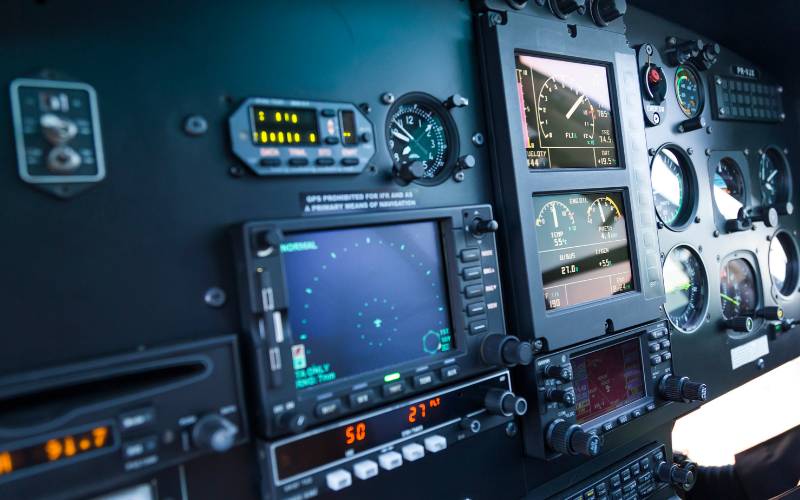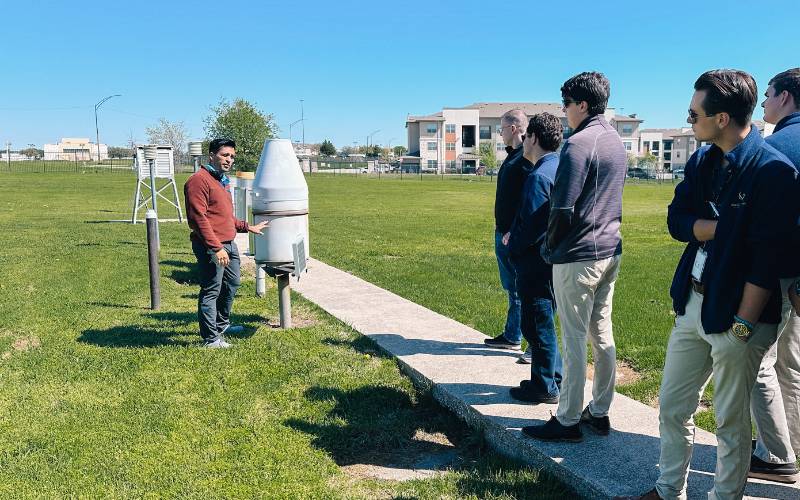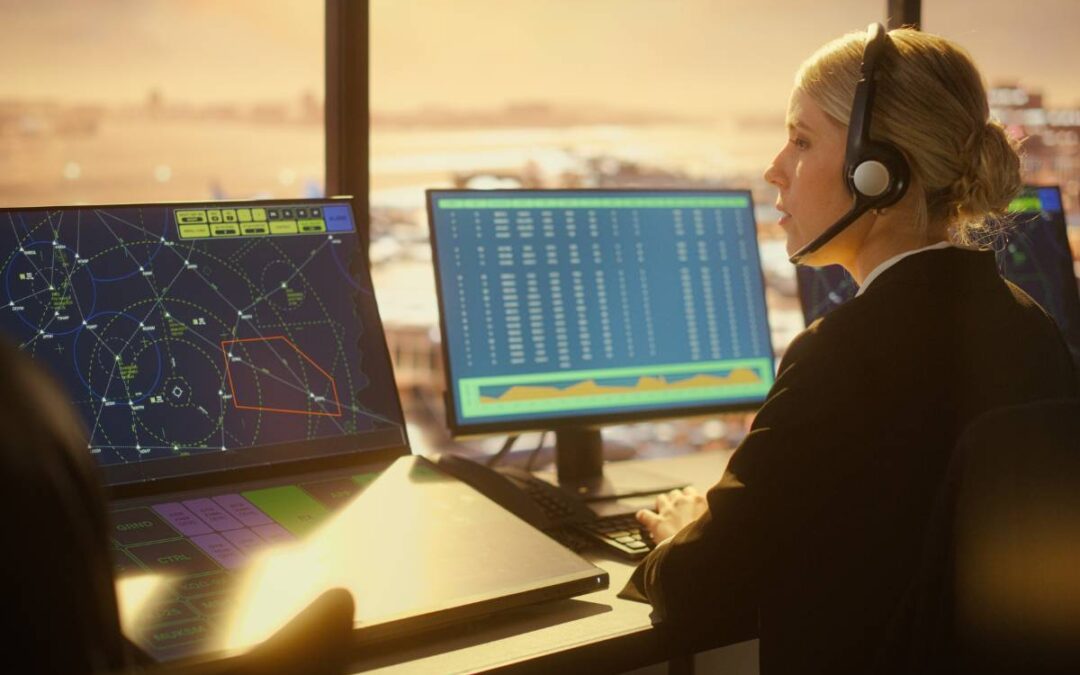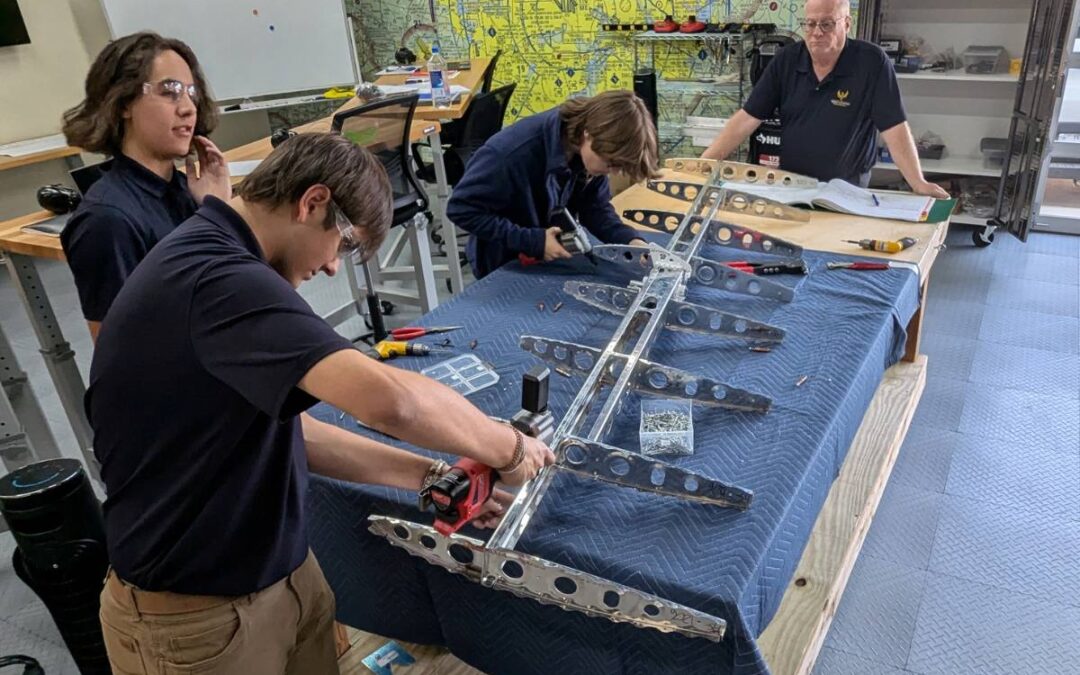Avionics technicians work on the electronic systems that allow modern aircraft to operate safely and efficiently.
As an avionics technician, you’d get to work with cutting-edge technology every day.
Your tasks would include checking and maintaining aircraft electronic systems, troubleshooting problems, and installing new equipment. It’s a hands-on role that requires technical know-how and problem-solving skills.
All things that students develop when enrolled at a STEM high school.
You’d use your knowledge of electronics, math, and physics to keep planes flying safely.
If you enjoy working with complex systems and have a passion for aviation, becoming an avionics technician could be the perfect fit for you.
Role And Responsibilities
Avionics technicians play a crucial part in keeping aircraft safe and operational. They work with complex electronic systems in a variety of aircraft..
The Primary Duties of an Avionics Technician
As an avionics technician, you’ll install, maintain, and repair electronic systems in aircraft.
Your main focus will be on communication, navigation, and flight control systems. You’ll need to be skilled at reading schematics and diagrams to understand how these systems work.
This job involves a lot of hands-on work with tools and testing equipment.

You’ll use devices like oscilloscopes to check if systems are working correctly. When there’s a problem, you’ll need to figure out what’s wrong and fix it.
You’ll also be responsible for keeping detailed records of all the work you do on the aircraft. This is a vital safety step that helps other avionics techs see past issues with the system.
The Day-to-Day Life of an Avionics Tech
An avionics techs daily tasks will vary but can include any of the following:
- Inspecting aircraft systems to make sure they’re working properly
- Troubleshooting and diagnosing issues with electronic equipment
- Installing new avionics systems or upgrading existing ones
- Testing systems using specialized equipment
- Keeping detailed records of all work done
- Repairing or replacing faulty components
You’ll work with a variety of systems including GPS, radar, and autopilot.
You might also help modify or retrofit aircraft to add new features or improve existing ones.
Communication is also big part of the job. You’ll need to work closely with other technicians, engineers, and maintenance staff to keep aircraft running in top shape.
Required Education And Skills
Becoming an avionics technician requires specific education and skills. You’ll need a mix of technical knowledge and practical abilities to succeed in this field.

Educational Background And Degrees to Become an Avionics Tech
To start your career as an avionics technician, you’ll need a high school diploma at minimum. Focus on math, physics, and computer science classes while in high school.
After high school, you’ll need to earn your Airframe & Powerplant certificates. While you can technically become an avionics tech without earning your A&P, very few jobs will hire you without it.
After you earn your A&P you’ll need to attend an avionics specific program to give you additional specialized training in working with avionics.
Key Skills And Qualifications
As an avionics technician, you’ll need strong technical and problem-solving skills. You’ll need to be comfortable working with complex electronic systems.
Key skills include:
- Attention to detail
- Critical thinking
- Mechanical knowledge
- Good communication
You’ll also need to be fluent in English. This is important for reading technical manuals and communicating with team members.
Certifications can also boost your career. The FAA offers several relevant certifications for avionics technicians that may open doors for new jobs or roles with the major airlines.
Attending A STEM High School
Attending a STEM high school can give you a big advantage as you follow this career path.
STEM schools like Rising Aviation High School offer advanced classes in science, technology, engineering, and math.
At a STEM high school, you might:
- Work on hands-on projects related to avionics
- Learn about aircraft systems early on
- Gain experience with the latest technology
This early exposure can help you decide if avionics is right for you. It can also make your college applications stand out.
At Rising Aviation, our students gain hands on experience working on actual aircraft with our maintenance program. If you want to become an avionics technician, our program will give you a solid foundation and help prepare you for your A&P program.

Career Path And Advancement
Becoming an avionics technician offers exciting opportunities for growth. You can start with entry-level positions and work your way up to lead roles or specialized areas.
Typical Career Progression
As we’ve already mentioned, your career path will begin with earning your A&P certificates and then attending a specialized avionics program.
Next, you’ll likely start in an entry-level job. Here, you’ll gain hands-on experience working with aircraft systems.
As you grow in your role, you might become a senior technician. This position comes with more responsibilities and complex tasks.
With experience, you could advance to a lead technician role. In this position, you’ll guide junior technicians and likely manage projects for your company.
Opportunities For Advancement And Specialization
As you progress in your career, you’ll find many chances to grow and specialize.
You might choose to focus on a specific type of aircraft or system. For example, you could become an expert in navigation systems or communication equipment on the A320.
Some avionics technicians move into management roles. You could lead a team or oversee an entire department.
Certifications can also boost your career. Getting certified in specific areas shows your expertise and can lead to better job opportunities.
You might also consider branching out into related fields. Some technicians move into engineering or aircraft design roles.
Continuing education is key in this fast-changing field. Staying up-to-date with new technologies will help you advance throughout your career.
Challenges and Rewards
Like any job, there are pros and cons to being an avionics technician. You’ll face some tough situations, but you’ll also enjoy many benefits in this career.
Common Challenges Faced In This Career
Working as an avionics technician can be demanding.
The job often requires you to be on your feet for long hours and sometimes crawl into cramped, confined spaces.
You’ll need to work nights or on weekends, especially when aircraft need urgent repairs. As you grow in seniority you may be able to work the day shift but many avionics techs spend years on the night shift.
Weather can be an issue too. If you work outdoors, you’ll have to deal with hot summers and chilly winters. You’ll need to wear protective gear, which can be uncomfortable in extreme temperatures.
This is a deadline driven role so you’ll often be working under a fair amount of pressure as companies try to get their aircraft back in the air making money.
Rewards and Benefits of Pursuing This Career Path
Despite the challenges, being an avionics technician can be very rewarding.
You’ll get to work with cutting-edge technology and play a vital role in keeping aircraft safe. It’s a hands-on job where you’ll see the results of your work right away.
The salary can be quite good. The median annual wage was $65,230 in May 2020, with room to grow as you gain experience. You might also get perks like health insurance and retirement plans.

Given the huge demand for aviation maintenance professionals, we’ll likely see pay rates continue to climb over the next decade.
Your skills will always be in demand, giving you job security. Plus, you’ll have chances to travel and work in different places. The work environment is often exciting, with opportunities to work on different types of aircraft.
Future Outlook
Avionics technicians can expect exciting changes ahead. New tech and growing demand will shape your career path. You’ll have chances to learn and grow in this field.
Trends And Future Developments In The Field
Digital systems are taking over cockpits. You’ll work with more touchscreens and software-based tools. Artificial intelligence and machine learning are coming to aircraft systems. This means you’ll need to keep up with new skills.
Electric and hybrid planes are on the rise. You might work on battery systems and electric motors. Drones, and one day, flying taxis could also be part of your job.
Conferences and courses will help you stay current. Look for events that focus on the latest tech. Online learning can be a great way to pick up new skills quickly.
Job Market Outlook And Demand
Your skills will be in high demand. The need for avionics techs is growing fast.
Airlines, manufacturers, and repair shops all need your expertise.
Boeing’s latest Pilot and Technician Outlook predicts that over 700,000 new aviation maintenance technicians (including avionics techs) will be needed over the next 20 years.
Many current techs are nearing retirement. This opens up spots for newcomers like you.
To stand out, focus on learning the newest technology and getting the training you need to start. Employers want techs who can handle both old and new systems.
Stay flexible and ready to learn. Your career could take you to exciting places in the aviation world.





